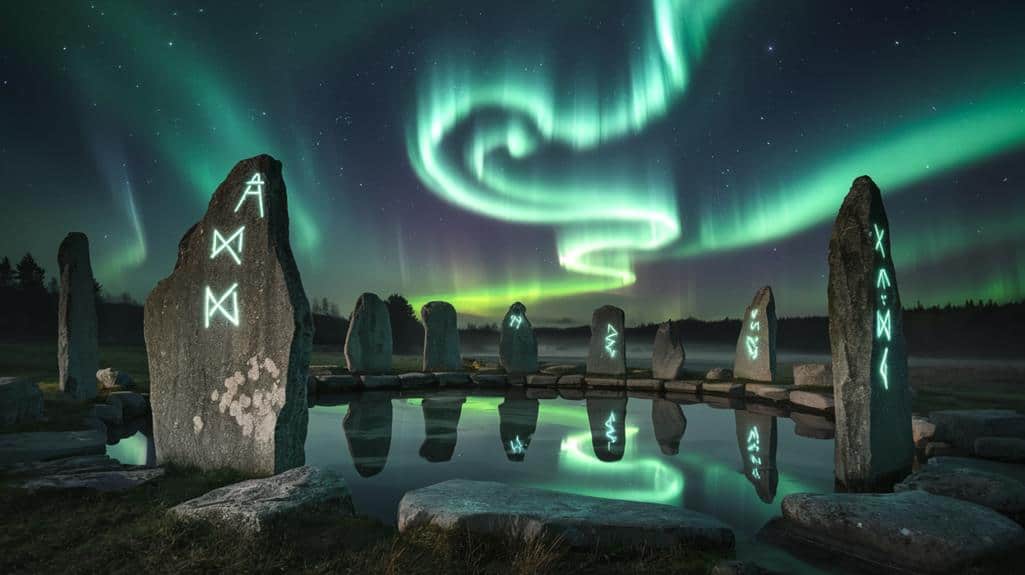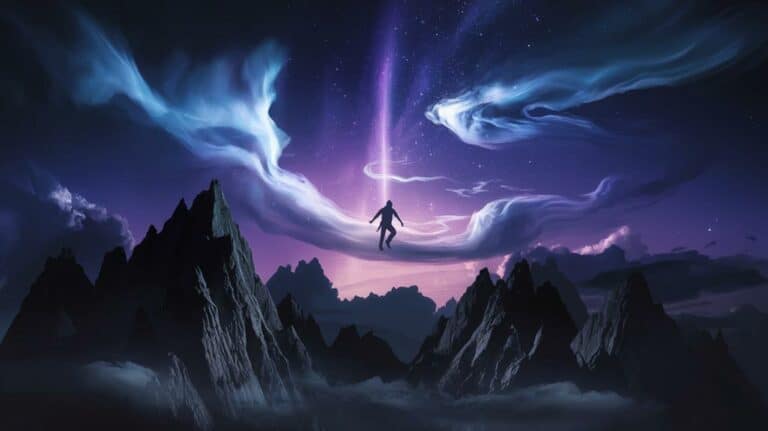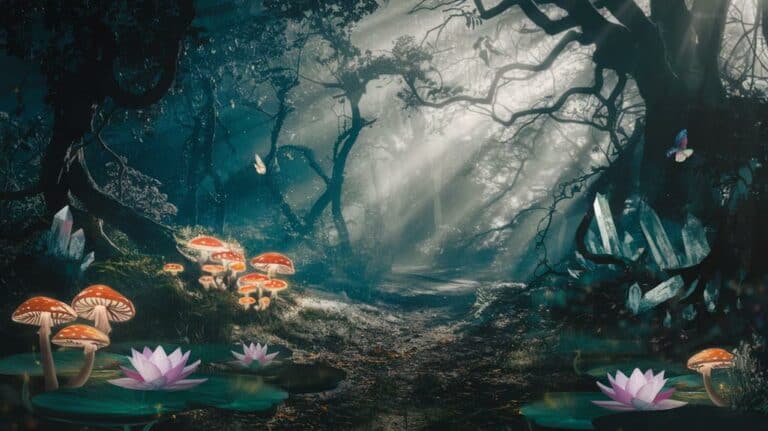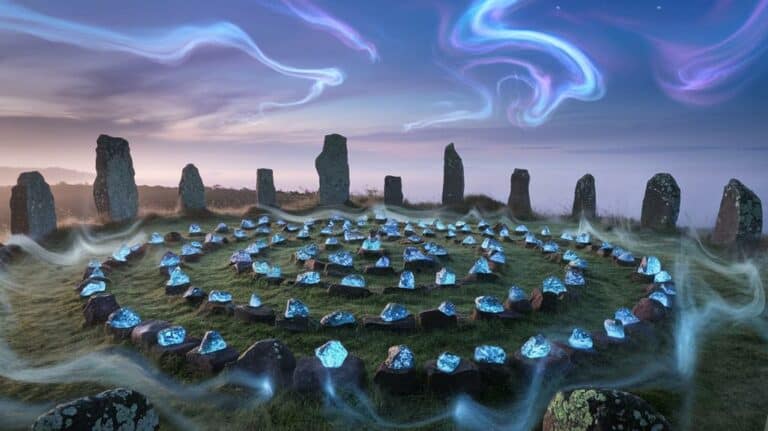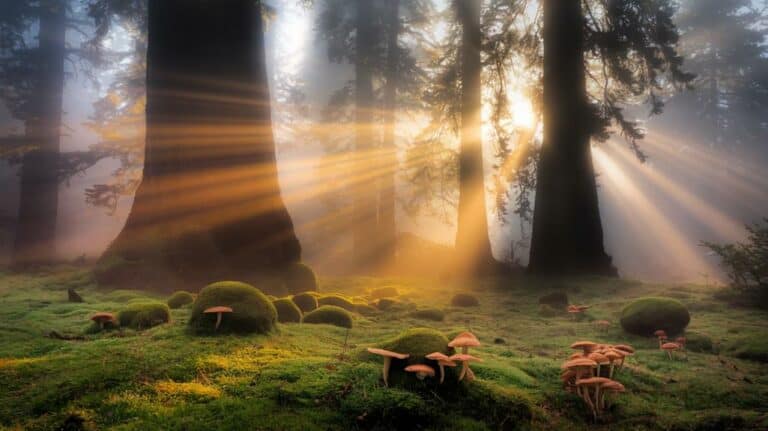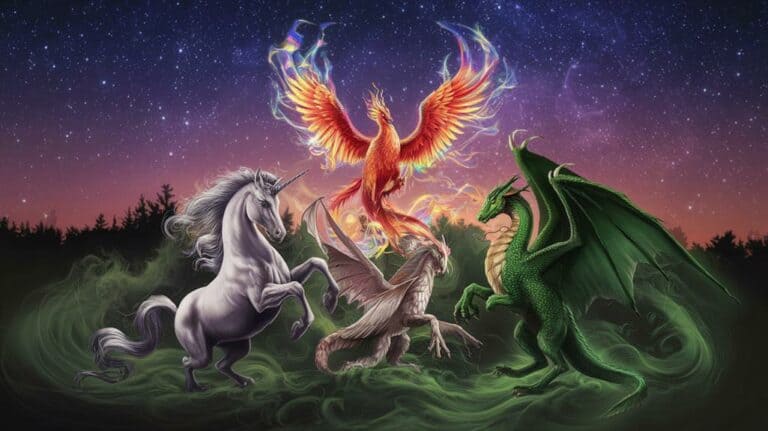Mystical Interpretations of Celestial Phenomena (Eclipses, Auroras & More)
When you gaze up at the night sky, you’re participating in a timeless human tradition of seeking meaning in celestial events. Throughout history, your ancestors interpreted these cosmic displays as divine messages, spiritual portents, or bridges between worlds. From Chinese astronomers who believed eclipses represented celestial dragons devouring the sun, to Norse cultures who saw auroras as the gleaming shields of Valkyries, these interpretations have shaped religions, cultures, and civilizations. While modern science explains these phenomena, the mystical significance they’ve held across millennia reveals profound truths about humanity’s eternal quest to understand its place in the cosmos.
Ancient Eclipse Lore Across Cultures
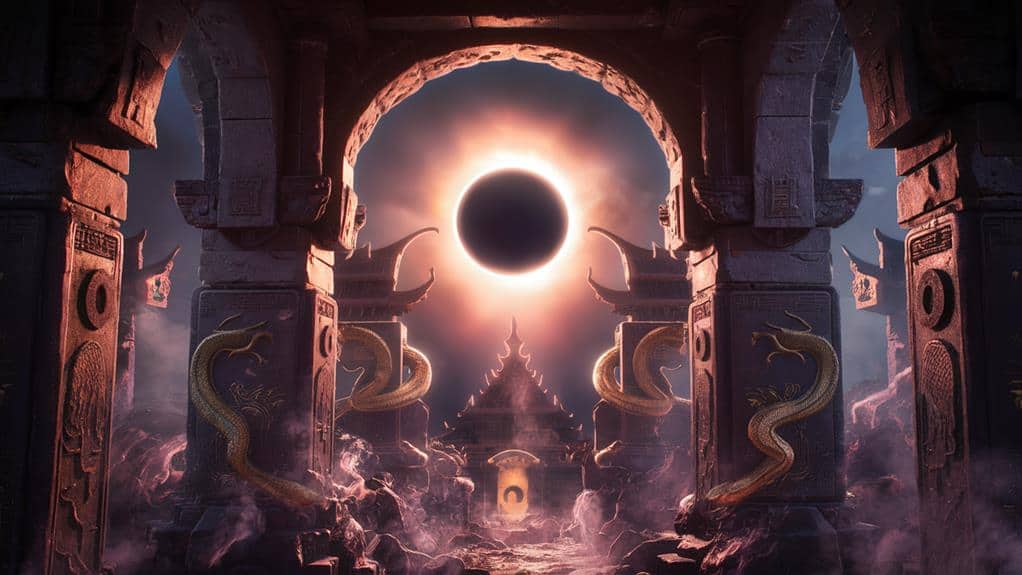
Throughout history, ancient civilizations developed rich mythological explanations for solar and lunar eclipses.
You’ll find that across continents and millennia, your ancestors wove intricate tales of celestial dragons devouring the sun, divine battles raging in the heavens, and cosmic wolves pursuing the moon through star-laden skies.
In ancient China, you’d have witnessed crowds beating drums and shooting arrows skyward to drive away the great sky dragon.
Among the Maya, you’d have understood eclipses as moments when divine jaguars stalked and consumed celestial lights.
If you’d lived in Viking-age Scandinavia, you’d have trembled at the sight of Skoll and Hati, the mighty wolves, as they chased and caught the sun and moon.
In ancient Hindu traditions, you’d have known Rahu and Ketu, the severed head and tail of a demon, eternally pursuing the luminaries through the cosmic ocean.
These interpretations weren’t mere stories – they were your ancestors’ profound attempts to grasp the overwhelming mystery of celestial mechanics, reflecting humanity’s enduring need to find meaning in the awesome and inexplicable movements of the cosmos.
Sacred Meanings Behind Aurora Displays
Sky-dancers and celestial spirits feature prominently in how indigenous peoples interpreted the aurora borealis and australis. You’ll find that across the northern hemisphere, many cultures saw these luminous displays as bridges between the earthly and spiritual domains, where ancestors’ souls would dance their way into the afterlife.
The Sami people believed you could summon the lights by whistling, though they’d warn you not to mock these celestial dancers, lest they sweep down and carry you away.
When you explore Arctic traditions, you’ll discover that the Inuit saw these lights as the torches of spirits guiding souls to a new domain, while Norse mythology interpreted them as the gleaming shields of the Valkyries.
In the southern hemisphere, the Maori understood aurora australis as the campfires of distant ancestors, sending messages across time and space.
These interpretations reflect humanity’s enduring quest to understand our place in the cosmos, as you’ll notice how each culture wove these mysterious lights into their spiritual framework, creating profound connections between the visible and invisible worlds that continue to resonate with modern seekers of meaning.
Meteor Showers in Religious Texts
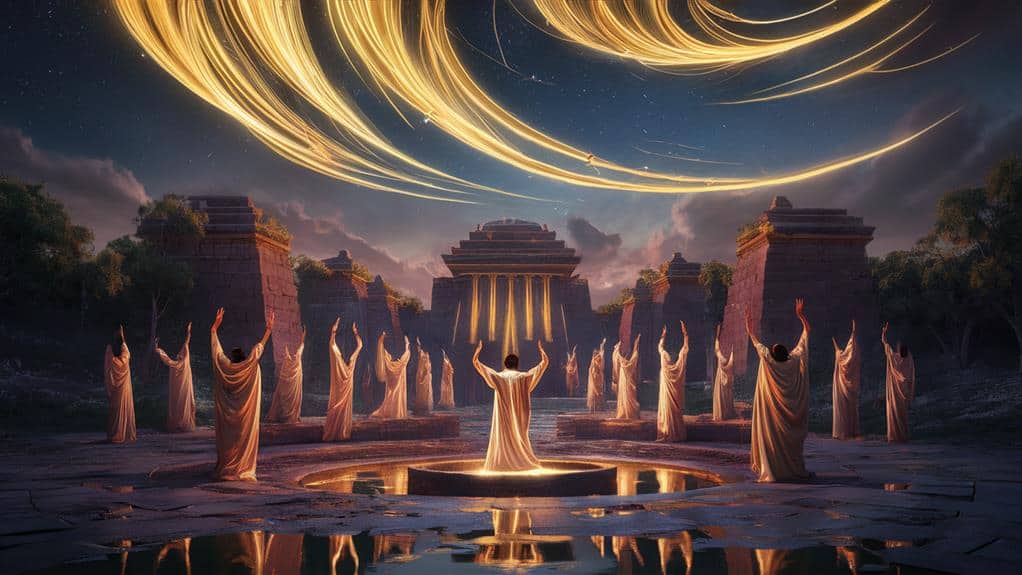
Much like the auroras, meteor showers have captured humanity’s religious imagination across millennia. You’ll find these celestial displays woven into sacred narratives across cultures, where falling stars often symbolize divine messages or cosmic interventions.
In Buddhist texts, meteor showers herald significant spiritual events, while ancient Mayan priests interpreted them as communications from their deities.
When you examine Abrahamic religious texts, you’ll discover meteors depicted as both harbingers of divine judgment and symbols of celestial glory. The Book of Revelation describes stars falling to Earth as signs of apocalyptic events, while Islamic traditions speak of shooting stars as weapons against evil spirits.
Native American spiritual traditions view meteor showers as the tears of celestial beings or the souls of ancestors traveling across the night sky.
These interpretations reflect your inherent connection to the cosmos and your search for meaning in celestial events. As you witness meteors streaking across the night sky, you’re participating in an ancient tradition of seeking divine significance in these fleeting moments of celestial drama, connecting your existence to forces greater than yourself.
Comets as Divine Messengers
For ancient civilizations, comets commanded both awe and fear as divine harbingers of change. You’ll find that across cultures, these celestial wanderers were interpreted as messages from the gods, carrying portents of momentous events that would reshape earthly affairs.
When you study historical records, you’ll discover how these cosmic visitors sparked profound spiritual reflections and often catalyzed significant social transformations.
As you explore deeper into humanity’s relationship with comets, you’ll notice how they’ve transcended mere astronomical phenomena to become powerful symbols of divine intervention. Throughout time, you’ve inherited these ancient interpretations through art, literature, and religious texts that speak of comets as celestial emissaries.
Whether announcing the birth of great leaders, the fall of empires, or impending natural disasters, these blazing celestial bodies have shaped humanity’s understanding of its place in the cosmic order.
You’ll recognize this pattern in how civilizations from China to Rome documented these appearances with meticulous detail, believing that decoding their trajectories would reveal divine intentions.
Even today, when you witness a comet’s passage, you’re connecting with this timeless human experience of seeking meaning in the heavens.
Celestial Events in Shamanic Traditions
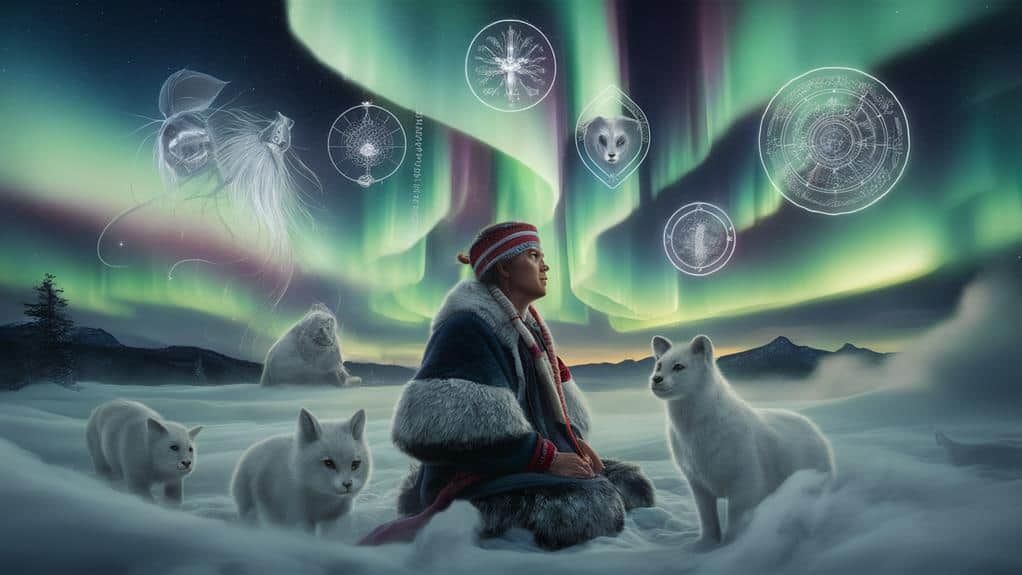
Across diverse shamanic traditions, celestial events serve as sacred bridges between the physical and spiritual spheres. You’ll find that shamans interpret these cosmic occurrences as moments when the veils between worlds grow thin, allowing for profound communication with ancestral spirits and divine forces.
As you witness an eclipse or aurora, you’re experiencing what shamans have long understood as doorways to heightened spiritual awareness and transformation.
In these ancient practices, you’re encouraged to view celestial phenomena not just as astronomical events, but as powerful catalysts for personal and communal evolution. When you observe the northern lights dancing across the sky, you’re participating in what indigenous healers recognize as nature’s most sacred display of spiritual energy.
The stars’ movements, lunar cycles, and solar events become your guides through life’s deeper mysteries, offering wisdom that transcends ordinary perception. You’ll discover that these cosmic messages, interpreted through shamanic wisdom, aren’t mere superstition but rather sophisticated systems of understanding humanity’s place within the greater cosmic order.
They’re inviting you to expand your consciousness beyond the material world into domains of deeper spiritual significance.
Modern Spiritual Views of Space
Contemporary spirituality embraces space exploration as a metaphor for humanity’s quest for higher consciousness and universal understanding. You’ll find that today’s spiritual seekers view celestial phenomena through a lens that merges ancient wisdom with scientific discovery, creating a bridge between empirical observation and mystical experience.
As you gaze upward, you’re participating in a modern ritual that connects you to both cutting-edge astronomy and timeless wonder. In your spiritual journey, you’ll discover that space phenomena like black holes and quantum mechanics have become powerful symbols for consciousness expansion and inner transformation.
You’re living in an era where the Hubble telescope’s deep field images inspire meditation practices, while NASA’s discoveries fuel conversations about humanity’s cosmic purpose. The vastness of space serves as your mirror for internal exploration, as you contemplate your place within the infinite universe.
Modern spiritual traditions encourage you to see astronomical events not as omens, but as reminders of your connection to the cosmic web of existence. You’re invited to recognize that each celestial observation offers an opportunity for both scientific learning and spiritual growth.



